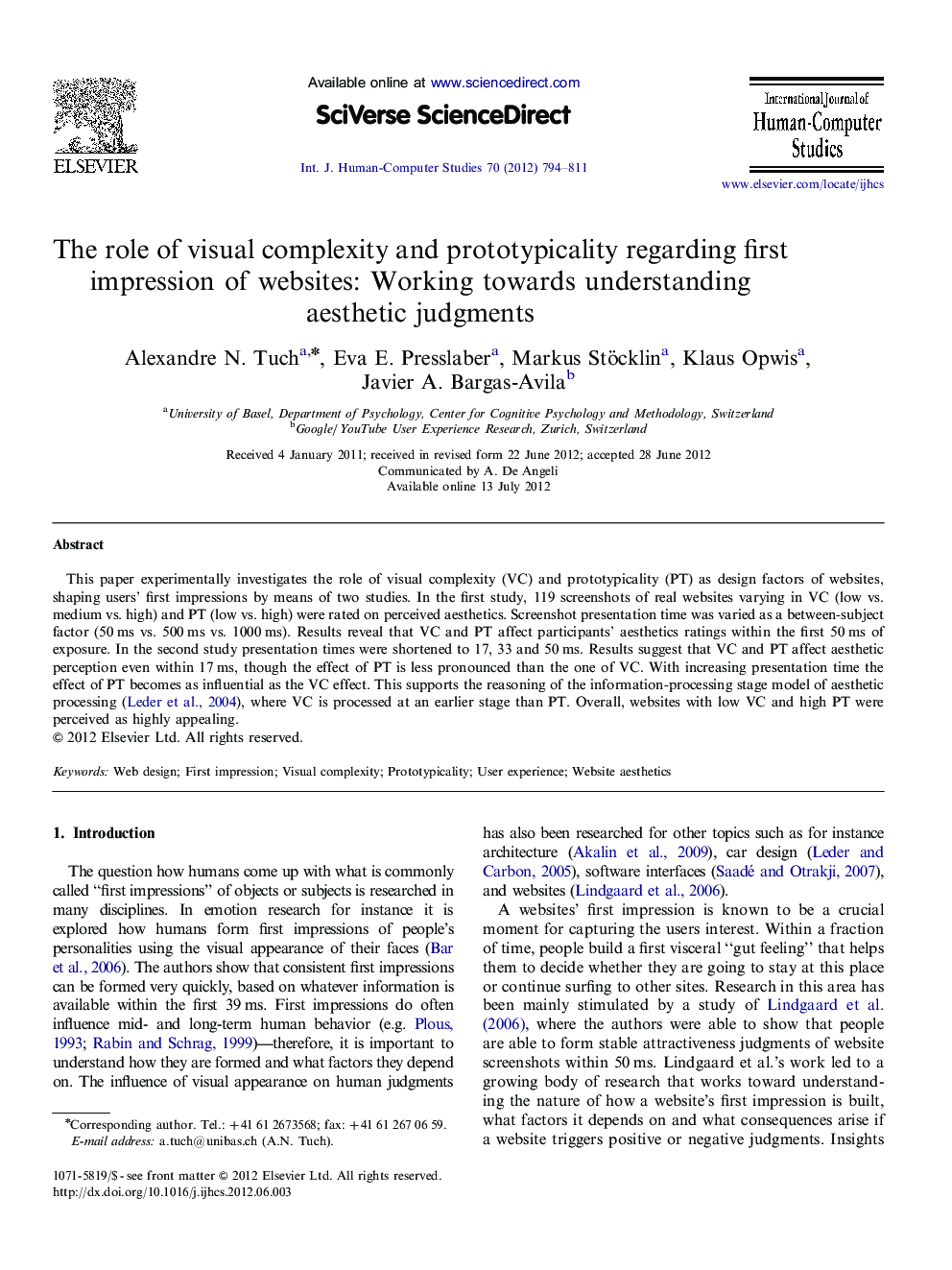| Article ID | Journal | Published Year | Pages | File Type |
|---|---|---|---|---|
| 401194 | International Journal of Human-Computer Studies | 2012 | 18 Pages |
This paper experimentally investigates the role of visual complexity (VC) and prototypicality (PT) as design factors of websites, shaping users' first impressions by means of two studies. In the first study, 119 screenshots of real websites varying in VC (low vs. medium vs. high) and PT (low vs. high) were rated on perceived aesthetics. Screenshot presentation time was varied as a between-subject factor (50 ms vs. 500 ms vs. 1000 ms). Results reveal that VC and PT affect participants' aesthetics ratings within the first 50 ms of exposure. In the second study presentation times were shortened to 17, 33 and 50 ms. Results suggest that VC and PT affect aesthetic perception even within 17 ms, though the effect of PT is less pronounced than the one of VC. With increasing presentation time the effect of PT becomes as influential as the VC effect. This supports the reasoning of the information-processing stage model of aesthetic processing (Leder et al., 2004), where VC is processed at an earlier stage than PT. Overall, websites with low VC and high PT were perceived as highly appealing.
► Visual complexity (VC) and prototypicality (PT) of websites affect users' first impression. ► Both factors influence aesthetic judgments after a very short presentation time of only 17 ms. ► At 17 ms the effect of PT is less pronounced than the one of VC. ► With increasing presentation time the effect of PT becomes as influential as the VC effect. ► Websites of low VC and high PT are preferred over pages of high VC and low PT.
